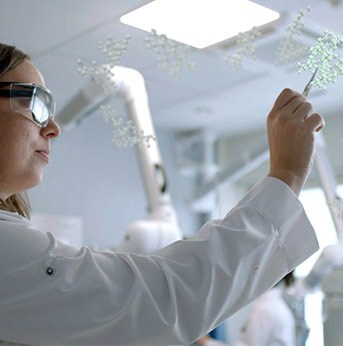Unexpected impurities that suddenly arise in a QC or other analysis may create a lot of stress and anxiety within different departments of a pharmaceutical company.
In a lot of cases, these unexpected impurities are – at first – not identified, as they are often initially detected with nonspecific detectors in generic analytical methods, such as HPLC-UV Chromatography.
These impurities may be observed throughout the complete life cycle development of the drug product.
What is the impurity?
As the regulatory department, as well as the quality department, try to evaluate the impact of this impurity on the drug quality and safety, the first question that pops up is: “What is it?” At first, this appears to be an easy and straightforward question but it may turn into a nightmare for the analytical chemistry department. For them, it means:
-
- An uncontrolled in-house validated process.
- A complete shift in priorities because of the high urgency of the problem.
- The necessity of having extensive expertise and access to the high-end analytical techniques which allow structure elucidation, including accurate mass measurements, such as LC-ToF or GC-ToF or other techniques like NMR.
- A need to access analytical standards, even if they are not commercially available, in order to ultimately confirm the impurity’s identity in the routine QC analysis (such as confirmation of retention time with HPLC-UV).
Where is the impurity coming from?
Apart from the “What is it?” question, another question will arise: “Where is the unexpected impurity coming from?” This is a critical question if the presence of this unexpected impurity needs to be avoided. The origin of the compound may also determine which guidelines (and associated control limits) to follow in the final evaluation of the drug impurity. Relevant guidelines include ICH Q3A (Impurities in New Drug Substances), ICH Q3B (Impurities in New Drug Products), ICH Q3C (Impurities: Guideline for Residual Solvents), ICH M7 (Assessment and control of DNA reactive impurities in pharmaceuticals to limit potential carcinogenic risk), EMA, PQRI-PODP, and PQRI-OINDP.
Impurities may be introduced into the drug product through different potential cause pathways, as described in the root cause approach using the fishbone of Ishikawa.
Testing Locations
- Salt Lake City, UT, USA
- Itasca, IL, USA
Learn more about our locations and their certifications.
If you have additional questions about Impurities Identification test services, or would like to consult with the experts at Nelson Labs, just send us a request or call us at +1 (801) 290-7500.



